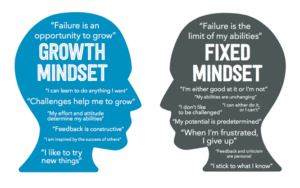It’s important for teams to work well together but it can be tough to learn how exactly to get them to do that. Here are three tips to help out with effective team training, and to ensure they work well together.
Focus on Trust
Sometimes the most important things can be left behind in team training, like trust. As business leaders, we know that trust is required in order to ensure that our teams work together effectively but sometimes we forget that trust needs to be built and is not automatic.
Individuals are not going to automatically trust their team members enough to rely on each other from the get-go. We need to make sure that we are doing things to encourage and build trust in our teams. One way to build trust is through good communication, and what is good communication? Open communication.
Effective team training makes sure to put a lot of focus on open communication. Communicating openly with each other makes it a lot easier to build a solid foundation of trust between team members. It is important to be transparent (open) about what’s going on with the company, whether it’s good and bad. When you’re transparent with your team it is a lot easier for the your team to be transparent with you.
“Whether you’re talking about athlete teams or work teams, the productivity and effectiveness of those teams is a foundation of trust.” – Iowa State University
Understand Different Types of Learning
It is very important that you understand the different types of learning styles in order to effectively train your team. With any group of people, you have several individuals who learn differently.
So, what can you do to ensure you are inclusive? Once you are aware of the different learning styles you can adjust your training techniques to meet those needs—for example, those who are visual learners versus those who are verbal learners, or one of the other four learning styles, will all have different requirements.
“Everyone learns differently, so it’s worthwhile to consider the various learning needs that exist within your organization and adjust your training accordingly.” – Sue Wigston
Training that does not consider the learning styles of everyone will lead to team members not being able to grasp what they’re learning. That means that some members won’t be as comfortable as others, which in turn makes it harder for them to work effectively together as a team. Effective team training means that you need to ensure that everyone has the ability to work as best as they can, which comes from understanding individual needs and adjusting your training strategies according to how people learn.
The Importance of Respect
I am sure it goes without saying that respect is an essential part of every team. You need to ensure that each member of the team respects each other, that they respect you, and that you respect them. Without mutual respect, the effectiveness of a team and their ability to work with one another can easily fall apart.
Showing respect is as easy as simply respecting everyone’s time. Just because you’re in charge doesn’t mean that it’s right for you to waste the team’s time. Make sure to always show up on time and treat everyone’s time as something as valuable as your own.
“If you’re the CEO, you need to cheer on your employees constantly too. Cheer them on for every little thing you can catch them doing well. It will pay huge dividends for you.” – Cameron Herold
Effective team training relies heavily on the fundamentals, so use these tips to ensure that everyone feels supported, is learning in their style, feels trusted, respected, and encouraged.
If you have questions or would like more information, I’d be happy to help. Please send an email, and my team will get in touch with you!





